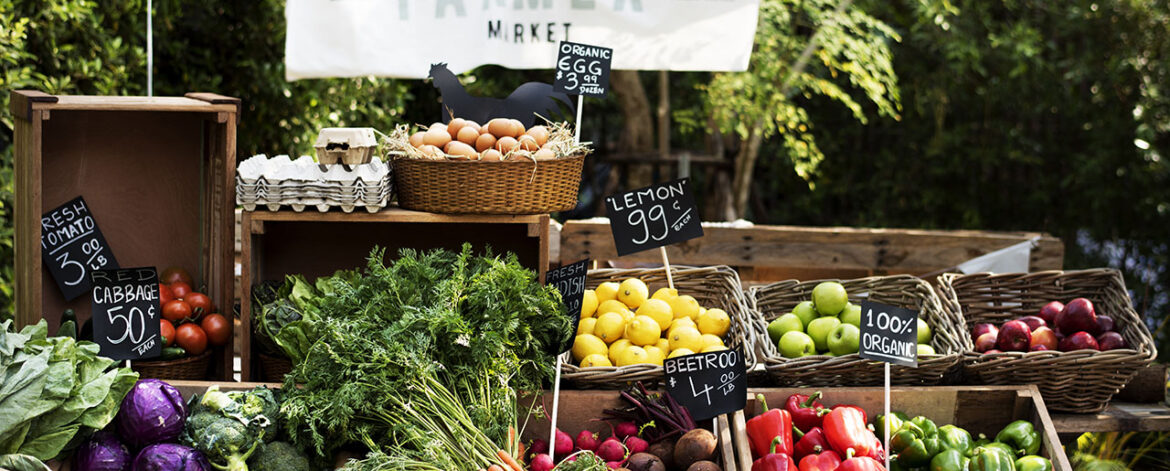Introduction
The farm-to-table movement – also known as farm-to-fork – advocates sourcing food directly from local farms rather than through long industrial supply chains. By shortening the journey from farm to plate, this approach ensures fresher, higher-quality produce while supporting local farmers and reducing the carbon footprint of food transport. It has revolutionized how consumers think about food, fostering greater awareness of where food comes from and how it’s produced. In recent years, e-commerce has begun to play a transformative role in this movement, enabling farms to connect with consumers through digital platforms and online marketplaces.
E-commerce is revolutionizing food supply chains by cutting out middlemen and streamlining distribution. The convenience of online marketplaces and direct-to-consumer (DTC) sales models has improved efficiency and accessibility for farmers, retailers, and consumers alike, essentially redefining traditional agricultural trade. From apps that let you order a farm-fresh box with a few taps to websites where farmers list their harvest for sale, digital innovation is making farm-to-table more scalable. Globally, online agricultural commerce is expanding rapidly – the market was estimated around $144 billion in 2023 and is projected to more than double by the early 2030s. This digital surge is bringing farm-fresh food to a wider audience than ever before.
Digital Transformation of Farm-to-Table Supply Chains
Online farm sales have seen key innovations that connect producers and consumers more directly. Many farmers now use digital marketplaces to reach buyers. For example, platforms like LocalHarvest in the U.S. allow farms to list produce online and sell them directly to consumers. Such marketplaces promote local and sustainable food systems while providing transparency – consumers can see exactly which farm their food comes from, and farmers can tell their story to a wider audience.
Innovative DTC models include community-supported agriculture (CSA) subscriptions and farm box deliveries, where customers receive seasonal produce regularly. Even before the pandemic, farms were moving online by creating e-commerce websites to sell and ship their goods; experts predict the online farm sales industry will double in size over the next decade. The COVID-19 era accelerated this shift – food subscription services for fresh produce and meal kits surged by 25% in 2020 as consumers sought safe, regular home deliveries. Companies like Misfits Market and Imperfect Foods saw explosive growth during this period, with one reporting a 229% jump in business in 2020.
Emerging technologies are bolstering traceability and quality in farm-to-table e-commerce supply chains. Several innovations are transforming how farm goods are tracked and delivered:
- Blockchain creates a transparent, tamper-proof record of a food item’s journey from farm to table. By logging each step on an immutable ledger, blockchain helps verify origin and production practices, offering transparency and building trust.
- Internet of Things (IoT) devices, such as smart sensors and RFID tags, are being deployed on farms and in delivery trucks to monitor conditions in real time. This ensures cold-chain integrity for perishables and provides buyers with valuable data.
- Artificial Intelligence (AI) helps optimize logistics and personalize customer experience. Predictive algorithms analyze data to forecast demand, AI routes delivery trucks dynamically, and computer vision systems handle automated quality control and sorting.
Together, these digital tools are transforming farm-to-table supply chains, enabling even small farms to reach national or global markets through a smartphone while consumers gain convenient access to trustworthy, fresh food.

Global Market Trends and Success Stories
The global e-commerce market for agriculture and food was valued at approximately $157 billion in 2024 and is expected to surpass $300 billion within a decade. While adoption varies by region, the overall trend is growth across all continents.
North America: The U.S. and Canada lead in farm-to-table e-commerce, driven by strong consumer demand for organic and local food. Platforms like Imperfect Foods and Misfits Market flourished during the pandemic. CSA subscriptions and online grocery delivery have become mainstream.
Europe: CrowdFarming, based in Spain, is a notable example. It enables farmers from 13 countries to sell directly to consumers across Europe. Customers can “adopt” a tree or animal and receive food from it. The trend emphasizes sustainability and transparency, often supported by EU certifications.
Asia-Pacific: China and India are driving massive growth. Pinduoduo, China’s largest agri-ecommerce platform, connects over 16 million farmers with 880 million users. In India, startups and government-supported platforms offer digital sales tools to farmers. Vietnam has launched its first national agricultural e-commerce platform.
Latin America: In Ecuador, the farmer-led platform La Cosecha del Día connects 400 smallholder farmers with urban customers, delivering fresh produce on the same day. Similar models are spreading across Brazil, Mexico, and Argentina, often using social media and mobile apps to connect farms and consumers.
Africa: Twiga Foods in Kenya is a standout. The platform connects 17,000 farmers with 8,000 vendors through a mobile app and logistics network. Twiga delivers 200 tons of produce daily, cutting post-harvest losses and improving market access for small farmers. Across Africa, digital agriculture is rising with mobile technology and growing infrastructure investments.
Each region has developed its own approach, influenced by consumer behavior, digital access, and logistical capabilities. But the common thread is the transformative power of e-commerce to make fresh, local food more accessible and efficient.

Challenges and Opportunities
Challenges
- Digital access gaps: Many rural areas lack reliable internet or digital literacy, limiting farmers’ ability to participate in online commerce.
- Financial and payment issues: In many regions, farmers and consumers have limited access to secure online payment systems or digital banking.
- Logistics: Delivering fresh, perishable items requires robust cold-chain infrastructure and fast, efficient delivery – a challenge in areas with poor roads and limited logistics providers.
- Regulatory barriers: Inconsistent food safety standards and unclear e-commerce regulations can complicate direct-to-consumer sales across borders or regions.
Opportunities
- Empowering farmers: E-commerce allows farmers to bypass middlemen, access fairer pricing, and gain a broader market, increasing profitability and stability.
- Consumer benefits: Shoppers gain transparency, convenience, and access to a greater variety of fresh, local, and sustainable food. Platforms foster engagement by letting consumers see who grew their food.
- Sustainability: Shortened supply chains reduce food miles, packaging, and waste. Predictive logistics and AI improve efficiency and minimize spoilage.
- Investment potential: With the agricultural e-commerce market set to grow significantly, investors and startups are entering the space. Innovations in logistics, fintech, and agri-analytics offer major growth opportunities.

Conclusion
E-commerce is reshaping the farm-to-table movement on a global scale. The fusion of digital platforms with traditional agriculture connects farmers and consumers more directly, building transparent, efficient, and resilient supply chains. Success stories from the U.S., China, Europe, Africa, and Latin America illustrate the diverse models of farm-to-table e-commerce now flourishing worldwide.
Though challenges remain – especially in infrastructure and regulation – continued innovation in blockchain, AI, logistics, and mobile access is addressing these gaps. The trend toward sustainable, locally sourced, and tech-enabled food systems is only gaining momentum. As governments, investors, and communities support these models, farm-to-table e-commerce is poised to become a defining feature of the global food supply in the years ahead.
References
AgFunder. (2023). 2023 AgriFood Tech Investment Report. AgFunder Network Partners. https://agfunder.com/research/agrifood-tech-investment-report-2023/
Business Insider. (2020). Imperfect Foods and Misfits Market See Explosive Growth Amid COVID-19 Grocery Delivery Boom. Business Insider. https://www.businessinsider.com/imperfect-foods-misfits-market-growth-coronavirus-2020-6
CrowdFarming. (2023). What is CrowdFarming? CrowdFarming.com. https://www.crowdfarming.com
FAO. (2022). FAO Innovation Award 2022: Pinduoduo – Making Agriculture Inclusive and Profitable. Food and Agriculture Organization of the United Nations. https://www.fao.org/innovation/awards/pinduoduo/en/


